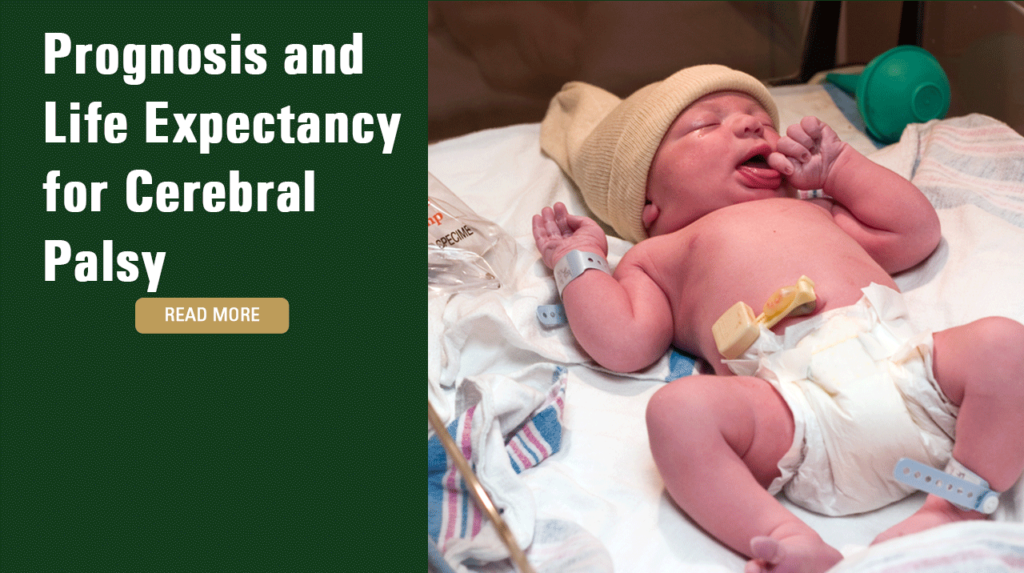Prognosis And Life Expectancy For Cerebral Palsy

Learning that your child has cerebral palsy can be devastating. You might worry about the quality of life your child might enjoy and how long he or she might be expected to live. Cerebral palsy varies in severity, so there is a range of prognoses and life expectancies for children who develop this condition. Here is some information about the prognoses and life expectancies of children with cerebral palsy from the birth injury lawyers at Raynes & Lawn.
Life Expectancy For People With Cerebral Palsy
Children who have cerebral palsy typically live between 30 and 70 years. Those who live longer normally have better medical care, better adaptive equipment, and a greater degree of mobility. Cerebral palsy doesn’t have a cure, and it is a lifelong condition. However, it is not progressive since the condition is caused by a brain injury. Other factors and conditions that are not caused by brain injury might also have an impact on a child’s life expectancy. While some children with cerebral palsy have a shorter life expectancy, most who are diagnosed with the condition will have a fairly normal life expectancy.
The Severity Of Cerebral Palsy And Its Effect On Life Expectancy
People with cerebral palsy who have greater mobility typically live longer than those who have little mobility. Being mobile means that the person can regularly exercise. Being able to regularly exercise helps to improve cardiovascular and muscular health. Children whose cerebral palsy is severe might have trouble with mobility and might also suffer respiratory issues and have seizures.
Children who have severe cerebral palsy typically need more medical care and will also have lower life expectancies. On average, it can cost more than $900,000 to treat cerebral palsy over a person’s lifetime. The costs include expenses for adaptive equipment, rehabilitation, doctor’s visits, and surgeries. While adaptive equipment is expensive, it can also help to improve mobility and a child’s expected lifespan.
The majority of children diagnosed with cerebral palsy have mild to moderate forms of the condition. If your child has mild to moderate cerebral palsy, he or she will likely have a similar life expectancy to children who do not have the condition.
Cerebral Palsy Complications And Life Expectancy
Several different types of complications can arise that can negatively impact a person’s expected lifespan. While cerebral palsy and its symptoms won’t change, complications that might arise from cerebral palsy might change. For example, muscle spasticity and seizures are common symptoms of cerebral palsy. However, if a person with cerebral palsy has a seizure that makes him or her fall and strike his or her head, causing a traumatic brain injury, that would be a complication.

Seizures are among the most serious types of complications of cerebral palsy. People who have seizures have involuntary losses of consciousness, convulsions, and sensory disturbances. If seizures are not properly treated, they can cause additional damage to other areas of the brain. Seizures can also cause physical harm when individuals fall. They can be treated with anti-seizure medications. Some types of seizure disorders are resistant to anti-seizure drugs, and in severe cases, the patient’s lifespan might be reduced.
A reduced range of motion and muscle spasticity are also commonly associated with cerebral palsy. In extreme cases, people with cerebral palsy might be unable to move. Some patients suffer from spastic quadriplegia, which involves a total paralysis of the body. Patients who have spastic quadriplegia might also have trouble with breathing. Most will require adaptive equipment to move around. Having limited mobility means the patient will have a higher risk of cardiovascular disease, which can result in high blood pressure and other cardiac problems.
Can Treatment Extend Life Expectancy?
Various types of therapy and medications can help to extend a child’s lifespan when he or she is diagnosed with cerebral palsy. Parents should work closely with medical professionals to create a treatment plan that includes the types of treatments that might have the greatest positive impact.
Anti-seizure medications and those that treat spasticity can improve children’s conditions when they also have seizure disorders or severe spasticity. Their muscles can be strengthened, seizures can be reduced, and cardiovascular health can be improved with the right medications and treatment.
Emotional Health
A child’s emotional and mental health is also important. Children who are more emotionally healthy can enjoy better overall health, which can increase their life expectancies. A good way for children with cerebral palsy to reduce stress and make social connections is to participate in group therapy.
Participating in sports also helps to increase the opportunities to socialize and improve mental health. Children can use adaptive equipment to participate in sports.
Every case of cerebral palsy requires a tailored treatment plan because each case is unique. As a parent of a child with cerebral palsy, you should avoid directly comparing your child’s condition to that of someone else. Your doctor will work to find the best treatment plan for your child.
Talk To A Birth Injury Attorney
While cerebral palsy is a permanent condition that must be managed, it is not progressive. With proper ongoing care, children who are diagnosed with cerebral palsy might have relatively normal life expectancies. However, they also will require more medical care than children who do not have the condition. You will need to have a good treatment plan and sufficient finances to ensure that your child will receive the best possible care.
Many cases of cerebral palsy are caused by the negligence of doctors and other healthcare professionals. If you think your child’s cerebral palsy might have been caused by mistakes made by medical providers, you should speak to the Cerebal Palsy Attorneys at Raynes & Lawn. We can help you understand whether compensation might be available for your losses. Call 1-800-535-1797 for a free case evaluation.

For the general public: This Blog/Website is made available by the law firm publisher, Raynes & Lawn, for educational purposes. It provides general information and a general understanding of the law but does not provide specific legal advice. By using this site, commenting on posts, or sending inquiries through the site or contact email, you confirm that there is no attorney-client relationship between you and the Blog/Website publisher. The Blog/Website should not be used as a substitute for competent legal advice from a licensed attorney in your jurisdiction.
For attorneys: This Blog/Website is informational in nature and is not a substitute for legal research or a consultation on specific matters pertaining to your clients. Due to the dynamic nature of legal doctrines, what might be accurate one day may be inaccurate the next. As such, the contents of this blog must not be relied upon as a basis for arguments to a court or for your advice to clients without, again, further research or a consultation with our professionals.
